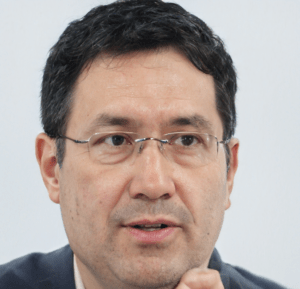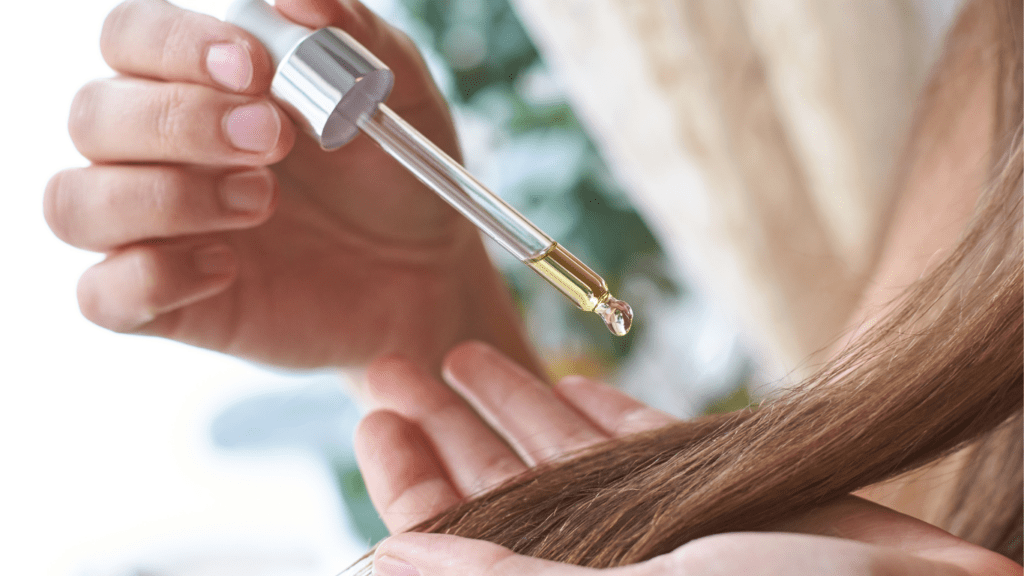Understanding Hair Growth
Hair growth consists of three main phases: anagen (growth), catagen (transition), and telogen (resting). The anagen phase can last two to six years while the catagen phase lasts only a few weeks. The telogen phase lasts several months before hair falls out and a new cycle begins. Each hair follicle operates independently, which can result in different phases at one time.
Factors like genetics, age, and health influence hair growth. For example, androgenic alopecia (pattern baldness) is a genetic condition affecting millions globally. Hormonal imbalances, nutritional deficiencies, and stress can also impact hair growth.
Studies by the American Academy of Dermatology found that healthy scalp conditions, a balanced diet, and proper hair care routines significantly affect hair health. Nutrients like biotin, zinc, and iron play crucial roles in maintaining hair growth. Lifestyle choices like reducing stress and avoiding harsh hair treatments can help maintain hair health.
New hair growth treatments target these phases and factors. For instance, platelet-rich plasma (PRP) therapy uses growth factors from one’s blood to stimulate follicles. Low-level laser therapy (LLLT) enhances cellular activity in the scalp, promoting hair growth. Topical treatments often include ingredients like minoxidil to extend the anagen phase.
Understanding the science behind these methods is essential for making informed decisions about hair growth treatments.
Latest Hair Growth Treatments

Current hair growth treatments offer improved efficacy and options tailored to individual needs. Here are some of the latest solutions available:
Topical Solutions
Topical solutions target hair follicles directly and include minoxidil and new peptides. Minoxidil, an FDA-approved substance, improves blood flow to the scalp, extending the hair’s anagen phase. Peptides like acetyl tetrapeptide-3 and copper peptides support hair strength and reduce inflammation. Daily application to the scalp ensures the best results.
Oral Medications
Oral medications provide systemic treatment for hair loss. Finasteride and newer formulations inhibit the conversion of testosterone to dihydrotestosterone (DHT), preventing follicle shrinkage. Dutasteride, another DHT blocker, shows promising results in clinical trials. Consistent oral intake regulates DHT levels, promoting hair regrowth.
Laser Therapy
Laser therapy uses low-level laser light to enhance cellular function in hair follicles. Devices like combs and helmets emit light to improve circulation and stimulate dormant follicles. Studies indicate an increase in hair density after regular use over several months. This non-invasive treatment option is becoming popular for its convenience and effectiveness.
Natural and Alternative Treatments
Exploring natural and alternative treatments can offer additional options for those seeking to enhance hair growth. These methods often focus on holistic approaches, utilizing natural ingredients and lifestyle practices.
Essential Oils
Essential oils are popular in natural hair growth treatments. Some oils, like rosemary, peppermint, and lavender, may stimulate hair follicles and improve scalp health.
- Rosemary Oil: Research suggests rosemary oil can promote hair growth by improving circulation to the scalp.
- Peppermint Oil: Contains menthol, which may expand blood vessels and increase follicle depth, encouraging hair growth.
- Lavender Oil: Known for its antibacterial properties, lavender oil can reduce scalp inflammation and promote a healthy environment for hair growth.
Diluting essential oils with a carrier oil (e.g., coconut or jojoba) reduces irritation risks. Massaging the mixture into the scalp may enhance absorption and effectiveness.
Herbal Supplements
Herbal supplements offer another avenue for supporting hair growth. Many supplements contain natural ingredients known for their potential benefits.
- Saw Palmetto: Often included in supplements targeting hair loss, saw palmetto may inhibit DHT production, a hormone linked to hair loss.
- Ginseng: Studies indicate ginseng may promote hair growth by increasing dermal papilla cells in the scalp.
- Aloe Vera: Known for its soothing properties, aloe vera can reduce scalp inflammation and help maintain a healthy scalp.
Consulting healthcare professionals ensures safety and effectiveness, as herbal supplements can interact with medications or conditions.
Effectiveness and Results
Understanding the effectiveness of new hair growth treatments helps individuals make informed choices. Results vary across different treatment types and individuals. Exploring clinical studies and user experiences provides insight into potential outcomes.
Clinical Studies
Clinical studies offer objective data on treatment effectiveness. For example, PRP therapy studies show significant increases in hair density after three months of treatment. Similarly, research on LLLT reveals a 39% increase in hair growth after 16 weeks. Thought leaders in dermatology reference minoxidil’s effectiveness at improving follicle size and extending the anagen phase, demonstrating up to 18% regrowth in clinical settings. As cited in authoritative journals, finasteride studies indicate a reduction of hair loss progression in 83% of users, proving its effectiveness in combating androgenic alopecia.
User Experiences
User experiences provide real-world insights into treatment outcomes. Reviews from individuals using PRP therapy often highlight noticeable hair density improvement within a few sessions. LLLT users frequently report thicker hair and less shedding after consistent use. Testimonials from minoxidil users often mention regrowth in previously thinning areas within six months. Feedback on finasteride includes reports of reduced hair loss and slow but steady regrowth, although some note potential side effects. Many users of essential oils and herbal supplements, like rosemary and saw palmetto, mention improved scalp health and slight increases in hair thickness over time.
Potential Side Effects and Risks
Understanding the potential side effects and risks of new hair growth treatments is critical. PRP therapy, which involves injecting platelets into the scalp, might cause scalp tenderness, redness, and temporary swelling. Some users report mild pain at the injection site, bruising, and, in rare cases, infection.
Low-Level Laser Therapy (LLLT) has its own set of potential side effects. Though generally considered safe, users may experience mild scalp irritation, dryness, or itching. Overuse can lead to temporary hair shedding.
Topical solutions like minoxidil can also lead to side effects. Commonly reported issues include scalp dryness, itching, redness, and, occasionally, unwanted facial hair growth. Misuse or over-application heightens these risks, causing further irritation.
Oral medications like finasteride bring different risks. Besides possible sexual side effects like decreased libido, some users have reported depressive symptoms, allergic reactions, and swelling due to fluid retention.
Natural alternatives are not without risks either. Essential oils and herbal supplements can cause allergic reactions, skin irritation, or interact adversely with other medications. Consulting a healthcare professional before starting any new treatment is advisable to minimize risks. Regular monitoring for adverse reactions ensures timely intervention if needed.
Choosing the Right Treatment for You
Determining the best hair growth treatment requires understanding your specific needs and circumstances. Consider the following factors to make an informed decision.
Identify the Cause of Hair Loss
Understanding what’s causing your hair loss is crucial. Genetics, hormonal changes, stress, and medical conditions like androgenic alopecia and thyroid disorders are common culprits. Consult a dermatologist or a healthcare provider for an accurate diagnosis.
Assess Treatment Options
Once you know the cause, evaluate different treatments. PRP therapy, which involves injecting platelet-rich plasma into the scalp, can promote hair growth and increase hair density. Low-Level Laser Therapy (LLLT) uses laser light to stimulate hair follicles. Topical solutions like minoxidil and oral medications like finasteride have shown effectiveness in clinical studies.
Consider Side Effects
Review the potential side effects of each treatment. PRP therapy may result in scalp tenderness and irritation. LLLT might cause mild scalp dryness. Topical solutions like minoxidil can lead to itching and dryness, while finasteride may have more severe systemic effects like sexual dysfunction. Consult a healthcare professional about these risks.
Lifestyle and Preferences
Your lifestyle and preferences also play a role. Some treatments require regular, ongoing application or frequent visits to a clinic. For example, minoxidil must be applied daily, and PRP therapies often require monthly sessions initially. Choose a treatment that fits into your routine comfortably.
Budget Considerations
Treatment costs vary widely. PRP therapy often costs $500 to $1,000 per session, while home-use LLLT devices can range from $200 to $1,000. Minoxidil and finasteride are generally more affordable but require long-term use. Weigh the benefits against your budget.
Natural Alternatives
Natural options also exist. Essential oils like rosemary and peppermint oil have shown potential in promoting hair growth. Herbal supplements containing saw palmetto or biotin are options. Though generally safer, natural treatments may offer slower results compared to clinical treatments.
Personalized Consultation
A personalized consultation with a dermatologist or trichologist can help tailor a treatment plan specific to your needs. These professionals can guide you through the available options, considering your medical history and the severity of your hair loss. They can also recommend combination treatments for enhanced effectiveness.
Monitor Progress
Track the progress of your chosen treatment. Keep notes on hair density, growth rate, and any side effects. Periodic assessments with your healthcare provider will help adjust your treatment regimen as needed.



 Founder & Hair Care Specialist
Edwardenn is the visionary force behind the website, with a deep passion for promoting healthy, beautiful hair. With years of experience in hair care and wellness, Edwardenn founded this platform to offer the latest hair care news, health tips, and expert advice. His mission is to empower individuals to understand and care for their hair, no matter their hair type or goals.
Founder & Hair Care Specialist
Edwardenn is the visionary force behind the website, with a deep passion for promoting healthy, beautiful hair. With years of experience in hair care and wellness, Edwardenn founded this platform to offer the latest hair care news, health tips, and expert advice. His mission is to empower individuals to understand and care for their hair, no matter their hair type or goals.

